NRAO eNews
Volume 10, Issue 9
11 October 2017
NRAO eNews
Volume 10, Issue 9 • 11 October 2017

Upcoming Events

6th VLA Data Reduction Workshop
Oct 23 - 27, 2017 | Socorro, NM

2017 Jansky Lecture
Oct 24, 2017 | Charlottesville, VA

2017 Jansky Lecture
Oct 27, 2017 | Green Bank Observatory, WV

2018 Jansky Fellowship Application Deadline
Nov 1, 2017

2017 Jansky Lecture
Nov 3, 2017 | Socorro, NM

The Origin of Galaxies, Stars, and Planets in the Era of ALMA
Nov 29 - Dec 02, 2017 | Pasadena, CA

NRAO Town Hall at the Jan 2018 AAS Meeting
Jan 11, 2018 | National Harbor, MD

The Very Large Array Today and Tomorrow: First Molecules to Life on Exoplanets
Jan 11, 2018 | National Harbor, MD

Astrophysical Frontiers in the Next Decade and Beyond
Jun 26 - 29, 2018 | Boulder, CO
AUI Names New President
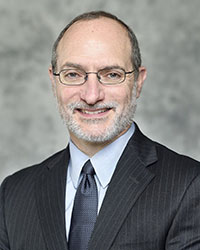
Associated Universities Inc. (AUI) is pleased to announce the selection of Dr. Adam Cohen as the new President of AUI, effective 1 November 2017. Dr. Cohen’s appointment is the culmination of an extensive search conducted by the AUI Board of Trustees. He will succeed Dr. Ethan Schreier, who has served as AUI President since 2004. Boston University Professor Roscoe Giles, Chair of the AUI Board of Trustees, noted that “Dr. Cohen has more than 30 years of experience in the management of research and development, strategic planning, and research facility operations, and we are fortunate to have attracted such a distinguished individual.”
Dr. Cohen is currently a Senior Associate with the Center for Strategic and International Studies Energy and National Security Program and finishing up his term at Princeton University. Until May 2017, he served as the Deputy Under Secretary for Science and Energy at the U.S. Department of Energy (DOE), overseeing basic science, applied energy research, technology development, and deployment efforts, including the stewardship of 13 of the 17 DOE National Laboratories. His experience also includes nearly seven years as Deputy Director for Operations at the Princeton Plasma Physics Lab, and 18 years at Argonne National Laboratory, where he held several positions including Deputy Associate Director for Energy Sciences and Engineering, and Deputy Director/Chief Operations Officer. He has served as head of the U.S. Delegation on the ITER Council, on the New Jersey Department of Environmental Protections’ Oyster Creek Oversight Panel, and on the DOE Laboratory Operations Board. Dr. Cohen earned his bachelor’s degree in engineering from Columbia University, his M.B.A. from the University of Chicago, and his Ph.D. in materials science from Northwestern University.
“AUI is a strong organization with a rich history in running large scale facilities that support collaborative science, and I very much look forward to being a part of this great organization” Dr. Cohen said. “I am particularly excited about visiting the NRAO facilities as well as Green Bank Observatory and Long Baseline Observatory facilities, which I plan to do in the first few months. For AUI, my main focus will be on a developing and implementing a near and long-term strategy for AUI, including leveraging our experience in running NRAO to pursue other exciting opportunities.”
Dr. Cohen will lead AUI as it enters its next decade of oversight of the state-of-the-art U.S. research facilities for radio astronomy funded by the National Science Foundation: the National Radio Astronomy Observatory, the Green Bank Observatory, and the Long Baseline Observatory. He will also focus on identifying and pursuing substantial new opportunities to apply AUI experience in large-scale facility management that will further benefit the international research community. Ethan Schreier, who will turn over the reins of AUI to Dr. Cohen after 13 years as President, observed that “AUI has a long and distinguished history of successful research center management, including the recent completion of the U.S. portion of the 1.3 billion dollar Atacama Large Millimeter/submillimeter Array, the world’s forefront millimeter-wave observatory. Adam will undoubtedly continue this record of success while also expanding the AUI research management portfolio. I am confident that AUI has a bright future under its new President.”
VLA Sky Survey: Observing Status and Outreach Opportunities
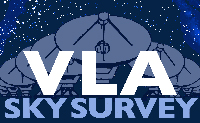
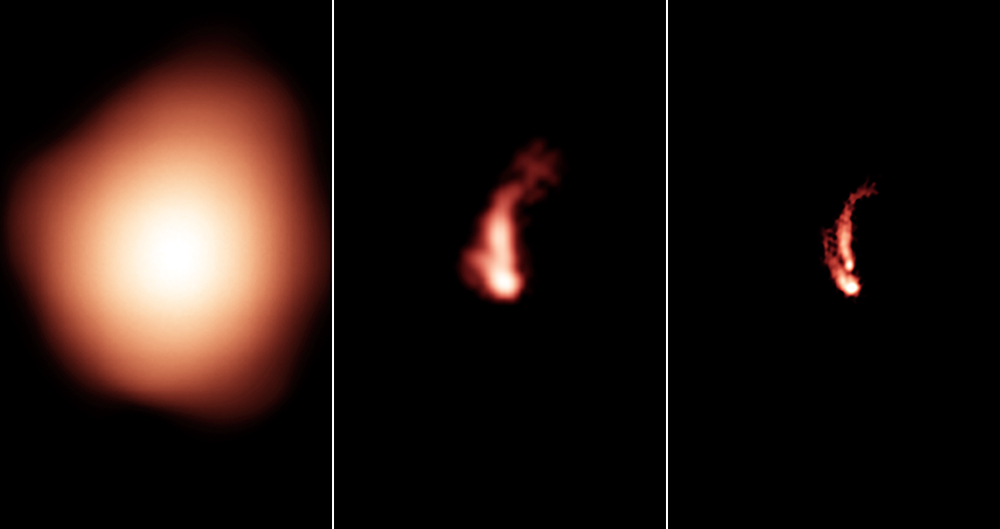
A radio galaxy observed with the NRAO VLA Sky Survey (NVSS; left), the Faint Images of the Radio Sky at Twenty-centimeters (FIRST) survey (middle), and the new VLA Sky Survey (right), illustrating the improvement in resolution being achieved with the new survey.
[click to enlarge]
The Very Large Array Sky Survey (VLASS), a seven-year project to map the sky visible to the VLA in three epochs at frequencies of 2-4 GHz, started observing 7 September 2017 (MDT). As of 6 October, 213 hours have been observed (3.9% of the full survey) and observing will continue throughout the VLA B-configuration in Semester 2017B. Further details of the survey may be found on the VLASS website.
All raw visibility data from the first half of the first epoch are available with no proprietary period through the new NRAO archive under project code VLASS1.1, along with initial calibration products.
"Quick Look" images (1 arcsec per pixel scale, Stokes I continuum) are posted to the VLA Sky Survey Resources web page as soon as they have undergone quality assurance. As of 6 October, 1100 square degrees of Quick Look images have been posted. Better sampled images in Stokes I, Q, and U, spectral index maps, and spectral cubes around bright sources (also in Stokes IQU) will be made available on a timescale of 6-12 months. This link also provides the sky tile definitions and observing / processing status.
In these early days of the survey, we especially encourage your feedback about the initial data products. Please contact us with your comments, or provide feedback through the Science Working Group.
In addition to the data products noted above, NRAO is developing several outreach opportunities associated with the survey that provide a chance for community involvement. At this time, we are especially interested in collaborations with community members who would like to include aspects of VLASS outreach as part of the "Broader Impacts" of their proposals to the NSF Astronomy and Astrophysics Research Grants (AAG) Program for the upcoming 15 November proposal deadline. Please contact Jessica Harris if you are interested in collaborating with NRAO on VLASS outreach.
ngVLA Design & Development Support

It gives me great pleasure to announce that $11M USD of funding will be provided beginning in October 2017 to support design and development activities focused on the next generation Very Large Array (ngVLA). These funds will be used to further develop the instrument scientific and technical definition, to define major costs and technical needs associated with the project, and to enable the participation of other major areas of the Observatory, such as the Central Development Laboratory, in this exciting initiative. A key use of the funding will be exploration of the high-performance antennas required to enable the array science.
Funding for the new initiative was provided by the National Science Foundation (NSF) Division of Astronomical Sciences, allowing NRAO to re-profile $11M in funding planned for instrument development over a longer time period into a focused two-year effort. This initiative was included in the successful Associated Universities, Inc. proposal to the NSF to manage NRAO over the next decade, and NSF’s decision allows the Observatory to accelerate the early design studies. This will enable the ngVLA concept to be more fully developed for the next U.S. astronomy Decadal Survey, commencing in 2019-2020, where all major new instruments and capabilities will be considered by the research community. We are already discussing ngVLA partnership opportunities with our scientific colleagues in the U.S. and around the world.
Please join me in congratulating the ngVLA Project Office for inspiring these NSF actions, and everyone who has contributed over the years to bringing this important science concept forward. Ideas related to ngVLA were discussed more than a decade ago as part of the NRAO Expanded Very Large Array phase 2 project, and also appeared in the NRAO Astro2010 Decadal Survey North American Array submission. The ngVLA has now found a unique voice, and the start of its development trail.
2018 Jansky Fellowship Program
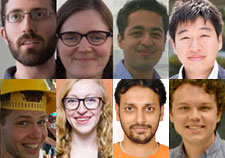
The Jansky Fellowship Program supports outstanding postdoctoral scientists whose research is broadly related to the mission and scientific goals of the National Radio Astronomy Observatory (NRAO), which operates two world-class research facilities: the Atacama Large Millimeter/submillimeter Array and the Very Large Array.
As a Jansky Fellow, you will have a unique opportunity to contribute to and learn from the development and delivery of the largest and most capable radio telescopes in the world. Research that employs NRAO telescopes in multi-wavelength collaborations is encouraged. Candidates with interests in radio astronomy techniques, instrumentation, computation, and theory are encouraged to apply. Applicants should describe how their research or technical interests couple with NRAO telescopes or science.
Appointments may be made at either of the NRAO sites: Socorro, New Mexico, or Charlottesville, Virginia. In compelling cases, a ‘split appointment’ Jansky Fellowship split between a university and an NRAO site, or a ‘non-resident’ Jansky Fellowship hosted at a university within the United States may be offered. Non-resident Jansky Fellows are encouraged to develop a research program that fosters close ties with the NRAO, and should present a compelling case why residence at their proposed host university will accomplish this. They are also strongly encouraged to make frequent and/or long term visits to NRAO sites during their Fellowship.
All Jansky Fellows are expected to spend at least 75% of their time on self-directed research. Jansky Fellows are also encouraged to spend 10-25% of their Fellowship on activities related to the development and delivery of radio astronomy techniques, capabilities, or outreach activities, using those opportunities to develop their own broad skill set.
The NRAO Jansky Fellowship Program provides numerous opportunities for early career scientists to acquire a deep knowledge and understanding of the state-of-the-art in radio astronomy and to establish themselves as innovative, independent research scientists. Jansky Fellows are encouraged to develop research collaborations with NRAO scientific staff, scientists at U.S. universities, and their colleagues in the international astronomical community. An annual, multi-day NRAO Postdoctoral Symposium fosters collaboration between Jansky Fellows and the Observatory’s scientific staff.
The starting salary for the 2018 Jansky Fellowship program will be $67,500 per year for an initial two-year appointment with possible renewal for a third year. A research budget of up to $17,000 per year is provided for travel and computing support. Fellows are also eligible for page charge support, vacation accrual, health insurance, and a relocation allowance. Up to $3,000 per year is provided to non-NRAO institutions hosting a Jansky Fellow to defray local institutional expenses.
The deadline for 2018 Jansky Fellowship Program application materials, including letters of reference, is Wednesday, 1 November 2017 at 11:59 pm EDT. Award offers will be made starting in early January 2018. Fellowships normally begin in September 2018.
For more information about the Jansky Fellowship Program and instructions on how to apply, please visit the Program website. Questions or assistance with the application procedure, as well as requests for additional information on the Jansky Fellowship Program may be sent to Jansky2018@nrao.edu. NRAO is an equal opportunity employer.
Call for Second Round of ngVLA Community Studies

As part of the process of building towards a final concept for the ngVLA, NRAO recently launched the ngVLA Community Studies program, allowing members of the scientific and engineering communities to become major contributors to this effort. Given the success of our first round of ngVLA Community Studies, we are proud to announce a second round aimed at tackling some of the most pressing questions unveiled by the initial studies.
The primary objective for this second round of community studies is to further develop the Key Science Goals outlined in Memo #19. Studies and simulations should focus on better quantifying the expected performance of the array for addressing these key science goals and provide additional supporting technical requirements.
As with the first round, we expect that all accepted Community Studies will publish their findings as part of a peer-refereed journal article or ngVLA memo, and present their progress/final results at the Astronomy Frontiers in the next Decade and Beyond conference 26-29 June 2018 in Boulder, Colorado. Consequently, we anticipate to be able to fund most formally accepted proposals at a modest level to offset travel expenses to present results at the June science conference, as well as for page charges from publications expected to result from the study.
We additionally expect to fund a small number of these Community Studies at a more significant level – up to $30,000 per award – through the ngVLA Community Studies Grants (CSGs) program. Proposals requesting financial support beyond $30,000 must be extremely well justified.
For more information on the ngVLA Community Studies Program, please visit the program website and the program call. We hope that you take this opportunity to actively participate in the design and development of an ngVLA.
The Very Large Array Today and Tomorrow: First Molecules to Life on Exoplanets
The NRAO will convene a Special Session entitled The Very Large Array Today and Tomorrow: First Molecules to Life on Exoplanets on 11 January 2018 in National Harbor, Maryland during the 231st American Astronomical Society (AAS) Meeting.
The Very Large Array (VLA) has had a major impact on nearly every branch of astronomy, and the results of its research are abundant in the pages of scientific journals and textbooks. Five years after the completion of the Expanded Very Large Array Project, the VLA has strengthened its position as the most versatile, widely-used radio telescope in the world. Rededicated in 2012 as the Karl G. Jansky VLA, the array continues to make cutting-edge discoveries across a broad range of disciplines. This Special Session will showcase that cutting-edge research. It will also address future transformative scientific opportunities that could be enabled by new capabilities that would ensure the instrument's pre-eminence well into the 21st century.
This Special Session will involve a session with invited oral presentations, and an associated poster session with contributed presentations.
The confirmed oral presentations include:
- Dominik Riechers (Cornell), The Cold Side of Galaxy Formation: Dense Gas Through Cosmic Time
- Brenda Matthews (NRC), Terrestrial Zone Exoplanets and Life
- Rachel Osten (STScI), The Bursting Universe: New Tools for Cosmology and Physics
- Mark McKinnon (NRAO), The Very Large Array: Pioneering New Directions in Radio Astronomy
- Mark Lacy (NRAO), The VLA Sky Survey
- Eric Murphy (NRAO), Frontiers of Radio Astronomy in the 2020s: The Next Generation Very Large Array
We look forward to seeing you at the January 2018 AAS!
Astrophysical Frontiers in the Next Decade and Beyond
26 – 29 June 2018
Boulder, Colorado
http://go.nrao.edu/ngVLA18
New research facilities and the scientific vision outlined by New Worlds, New Horizons have motivated the exploration of vast new discovery space, and astrophysics has seen extraordinary progress in the past decade, opening new frontiers across many fields. Astronomers have acquired the first high-resolution images of planet formation in a Solar System analog, probed the physics of energetic star-forming galaxies into the epoch of reionization, directly detected gravitational radiation from merging black holes, and discovered enigmatic new transients, such as Fast Radio Bursts.
Sponsored by the National Radio Astronomy Observatory, this conference will bring together a substantial cross-section of the astronomical community to discuss how to effectively address the highest priority astrophysical questions of our time. Plenary sessions will feature invited speakers, and three parallel sessions will address: (1) Exoplanet and Protoplanetary Disk Origins, (2) Galaxy Evolution Mechanisms, and (3) Black Holes & Transient Phenomena. Each session will canvas recent observational and theoretical progress, address key unanswered questions, and motivate future research directions in the context of next-generation facilities that would span the electromagnetic spectrum, including a Next Generation Very Large Array, the Large Synoptic Survey Telescope, 30m-class optical-infrared telescopes, the Advanced Laser Interferometer Gravitational-Wave Observatory, and the Square Kilometre Array.
SOC Co-chairs
| Brenda Matthews (NRC) | Cradle of Life |
| Caitlin Casey (UT) | Galaxy Evolution |
| Laura Chomiuk (MSU) | Black Holes and Transients |
Pre-registration is now open. We hope to see you in Boulder!
VLITE Finds Disturbed Ionosphere in the Wake of a Total Solar Eclipse
On 21 August 2017, Americans across the continental U.S. were treated to an event not seen for several decades: a total solar eclipse. While many citizens enjoyed the spectacle from backyards and road-trip destinations throughout the country, observatories focused their “eyes” on the Sun as well. The Karl G. Jansky Very Large Array (VLA) was no exception, observing the Sun at multiple frequencies before, during, and after the eclipse. However, the VLA also simultaneously conducted a unique set of observations aimed at characterizing the effects of the eclipse on Earth’s ionosphere / plasmasphere.
While most of the VLA antennas were pointed at the Sun, 12 antennas were looking at the bright radio galaxy M87. These 12 antennas are part of the VLA Low-band Ionosphere and Transient Experiment (VLITE), a dedicated backend that continuously captures, correlates, and analyzes data in the 320-384 MHz frequency range. In addition to traditional synthesis imaging, VLITE also characterizes fluctuations in ionospheric / plasmaspheric density via measured variations in visibility phases. When observing a bright cosmic source, this can be done with unmatched precision, the equivalent of ~1-10 ppm.
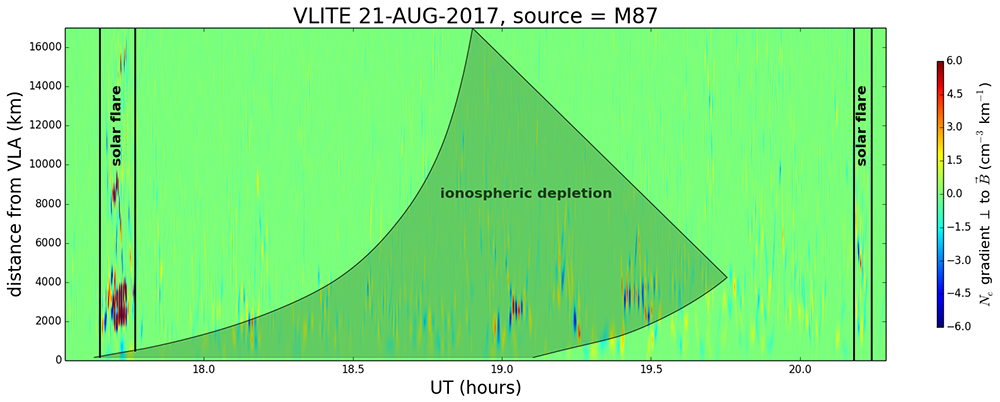
To look for ionospheric / plasmaspheric disturbances tied to the eclipse, a specialized spectral decomposition was applied to the M87 VLITE data. This method exploits the fact that disturbed flux tubes within the plasmasphere appear as magnetic eastward-directed waves to the VLA because the plasmasphere is dynamically dominated by co-rotation. The phase speeds of these waves are proportional to distance, allowing for a reconstruction of the electron density gradient as a function of (slant) range and time. The range / time image for the M87 VLITE data is shown here. The time ranges spanned by the large-scale ionospheric depletion seen within concurrent Global Positioning System (GPS) data as a function of longitude were mapped to the imaged flux tubes and are shaded in grey. With the exception of some solar flare-induced fluctuations, the observed disturbances appear confined to this part of the image. This strongly implies the disturbances resulted from the rapid depletion and slower recovery of the ionosphere / plasmasphere system brought on by the eclipse. It should be noted that these disturbances are not apparent within the GPS data, highlighting VLITE as a uniquely capable ionospheric / plasmaspheric disturbance hunter.
VLA Uses Solar Eclipse to Improve Coronal Magnetic Field Measurements

[click to enlarge]
The Karl G. Jansky Very Large Array (VLA), teaming with the Expanded Owens Valley Solar Array (EOVSA) in California, captured the partial phases of the total solar eclipse that was visible across the continental U.S. on 21 August 2017. The two complementary arrays provide multi-frequency images of solar active regions that can be used to measure the otherwise unknown magnetic field strength in the corona above sunspots, to compare with magnetic field measurements at the solar surface (figure, upper panel). VLA measurements taken after the eclipse at 48 frequencies from 2-8 GHz are shown in the lower panel in the figure. The frequency of the radio emission, due to electrons spiraling in the hot, magnetized coronal plasma, is proportional to magnetic field strength so that lower-frequency emission (blue contours) come from larger, weaker-field areas while higher-frequency emission (red contours) come from the stronger-field areas in the core regions of the sunspots.
During the eclipse, the edge of the Moon (two positions, one minute apart, shown as “Lunar Limb” in the figure) covered and then later uncovered the active regions, as shown in the EOVSA eclipse movie. Using a differential technique where the radio data at one time is subtracted from another, only the narrow gap between the two lunar limb positions needs to be imaged. By using closely spaced times (e.g. 1 second), both the spatial and temporal resolutions for imaging are greatly improved. The 2017 eclipse is the first opportunity to use this technique since the completion of the VLA upgrade, with its much improved bandwidth and frequency resolution. The combined VLA and EOVSA coverage of the two active regions that were on the Sun on that day will provide new insights into the structure of the solar atmosphere above sunspots, the sites of solar flares that can directly affect the Earth.
ALMA Ambassadors
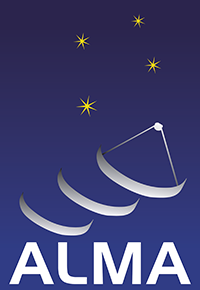
The North American ALMA Science Center (NAASC) is accepting applications for the ALMA Ambassadors Postdoctoral Program. The Program provides training and a $10,000 USD research grant (other forms of payment are available, see below) to postdoctoral researchers interested in expanding their ALMA / interferometry expertise and sharing that knowledge with their home institutions through the organization of ALMA Cycle 6 proposal preparation workshops.
The NAASC will sponsor selected postdocs at the National Radio Astronomy Observatory headquarters in Charlottesville, Virginia for three days in February 2018 to receive in-depth training. Training will include topics related to ALMA proposal writing, including: interferometry basics, ALMA science capabilities, recent ALMA headlines, use of the Observing Tool, and guidance with speaking on these topics. The postdocs will then host a local proposal preparation workshop at their home institution – similar to an abbreviated version of Community Day and NRAO Live! events from previous observing cycles – in advance of the Cycle 6 ALMA proposal deadline in April 2018.
All talk materials, supplies, and infrastructure for the workshops are provided by the NAASC. A $10,000 monetary grant is offered in support of the selected postdocs' independent research programs. If the awardee is not able to receive the monetary grant, the NAASC can offer up to $10,000 in science travel reimbursement (must be used within 12 months of training) or up to $10,000 for the host institution to support students or summer researchers. Postdocs with some radio or submillimeter interferometry experience are preferred. Postdocs must be based at a U.S. institution. Although not required, we will consider multiple postdoctoral applicants from the same institution.
Deadline to apply is 1 December 2017. To apply, please send a CV and a completed application to Katelyn Sevin.
ALMA Program News

Science Operations
ALMA Cycle 4 drew to a close and Cycle 5 began on schedule on 1 October. Owing to exceptionally bad snowstorms in May, many grade A proposals were not observed and will be carried forward into Cycle 5, in which an estimated 4,000 hours of time are projected to be observed. There are three "pseudo-configurations" that have been modified from C43-8, C43-9 and C43-10 to reduce the number of antenna moves and hasten the recovery from the snow events.
Antennas are located in a version of C43-10 – 0.04 arcsec beam at 100 GHz, 244m to ~16km baselines – into October. See the news article on Cycle 5 configurations. The array will move to shorter baselines for later. Proposals are now being accepted for Director’s Discretionary Time proposals for Cycle 5. Please see the ALMA science portal news article for details.
ALMA Development: A Science Sustainability Program
There will be a special session at the National Radio Science meeting in Boulder, Colorado 4-7 January 2018 on ALMA plans for its science development in the next decade. Please see the meeting website for registration and additional information. The abstracts submitted for the session are online.
New NRAO CASA Lead: Ryan Raba
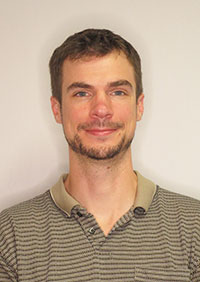
I am pleased to announce that Ryan Raba has joined NRAO as the Common Astronomy Software Applications (CASA) Lead in the Observatory’s Data Management & Software (DMS) Department, effective Monday, 25 September 2017.
Ryan has degrees in Astrophysics and Computer Engineering from the Pennsylvania State University, and a Master’s of Science degree in Systems Engineering from Cornell University. Prior to joining the NRAO, Ryan worked on digital signal processing techniques with interferometers at Lockheed Martin for 13 years, then moved to the U.S. Federal Bureau of Investigation, where he has worked for the past six years as an investigative Computer Scientist and program manager of a large distributed team.
Please join me in welcoming Ryan to the NRAO, DMS, and CASA.
Recent Media Releases
|
Astronomers Discover Traces of Methyl Chloride around Infant Stars and Nearby Comet |
|
|
ALMA Receives Award for Its Contribution to the Progress of Chile |
|
|
VLBA Finds Closest Pair of Supermassive Black Holes |
|
|
Image Release: Aging Star Blows Off Smoky Bubble |
|
|
VLA Begins Huge Project of Cosmic Discovery |
|
|
Next-generation U.S. Radio Telescope Development Begins |
|
|
New Animated Series Explains What Makes ALMA So Special |
Career Opportunities
ngVLA Research Associate: The National Radio Astronomy Observatory invites applications for a next generation Very Large Array (ngVLA) Configuration Research Associate. The successful candidate will work within the ngVLA project team on a detailed investigation of the configuration and image simulation work with the ngVLA.
Jansky Post-Doctoral Fellowship: The Jansky Fellowship Program supports outstanding postdoctoral scientists whose research is broadly related to the mission and scientific goals of the National Radio Astronomy Observatory (NRAO). As a Jansky Fellow, you will have a unique opportunity to contribute to and learn from the development and delivery of the largest and most capable radio telescopes in the world. The NRAO Jansky Fellowship Program provides numerous opportunities for early career scientists to acquire a deep knowledge and understanding of the state-of-the-art in radio astronomy and to establish themselves as innovative, independent research scientists.
From the Archives
Ellen Bouton

[click to enlarge]
About this month's photo: Astrophytness, the NRAO wellness program, will sponsor the 6th Hein Hvatum Memorial VLA Bicycle Challenge on Saturday, 14 October 2017, a bicycle ride from Socorro to the Very Large Array site and back. As in previous years, there are options for shorter rides, and there will be a support vehicle.
Hein Hvatum, long-time NRAO Associate Director, was an avid bicyclist throughout his life. For many years, he organized the annual ride over 117 mountainous miles from Charlottesville to Green Bank for the Green Bank summer picnic: Charlottesville to Green Bank on Friday, picnic on Saturday, Green Bank back to Charlottesville on Sunday. (See From the Archives in the NRAO Newsletter, Vol. 3, No. 7, 29 July 2010, for a photo of the 1984 riders to Green Bank.) In 1999, a small group, including Hein (long-retired by 1999), Peter Napier, Gene Runion, Craig Walker, and two of Hein's ham radio friends, biked the section of the Continental Divide Trail on either side of Pie Town, New Mexico. The photo shows Hein early in his cycling career (1929, age 6), and then 70 years later heading towards Pie Town – with ham radio antenna attached to his bicycle! Thanks to Craig Walker for the 1999 photo, to Gene Runion for providing the 1929 Hvatum family photo, and to Jeff Hellerman for creating the composite.
From the Archives is an ongoing series illustrating NRAO and U.S. radio astronomy history via images selected from our collections of individuals' and institutional papers. If readers have images they believe would be of interest to the Archives, please contact Ellen Bouton.

